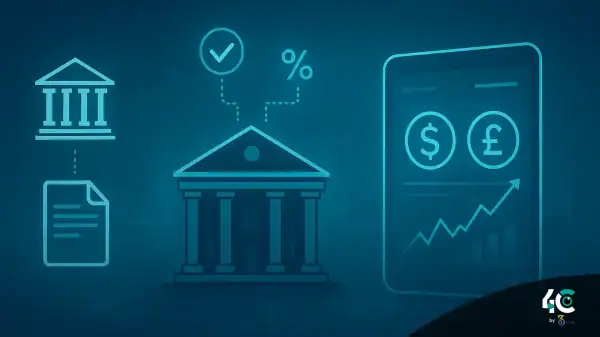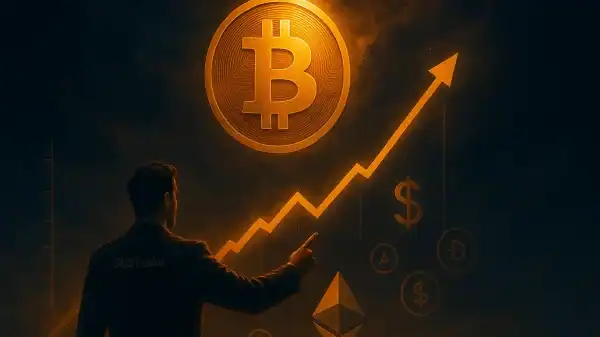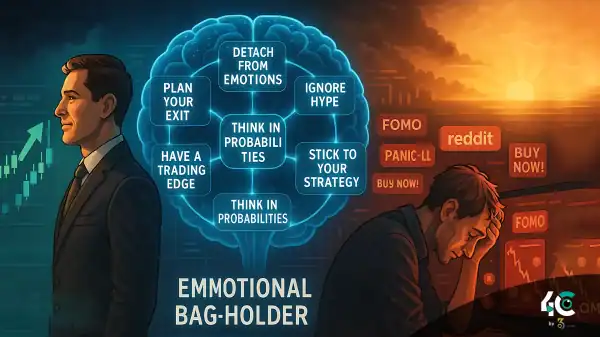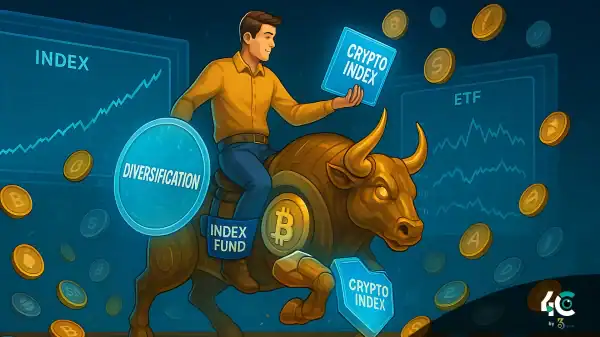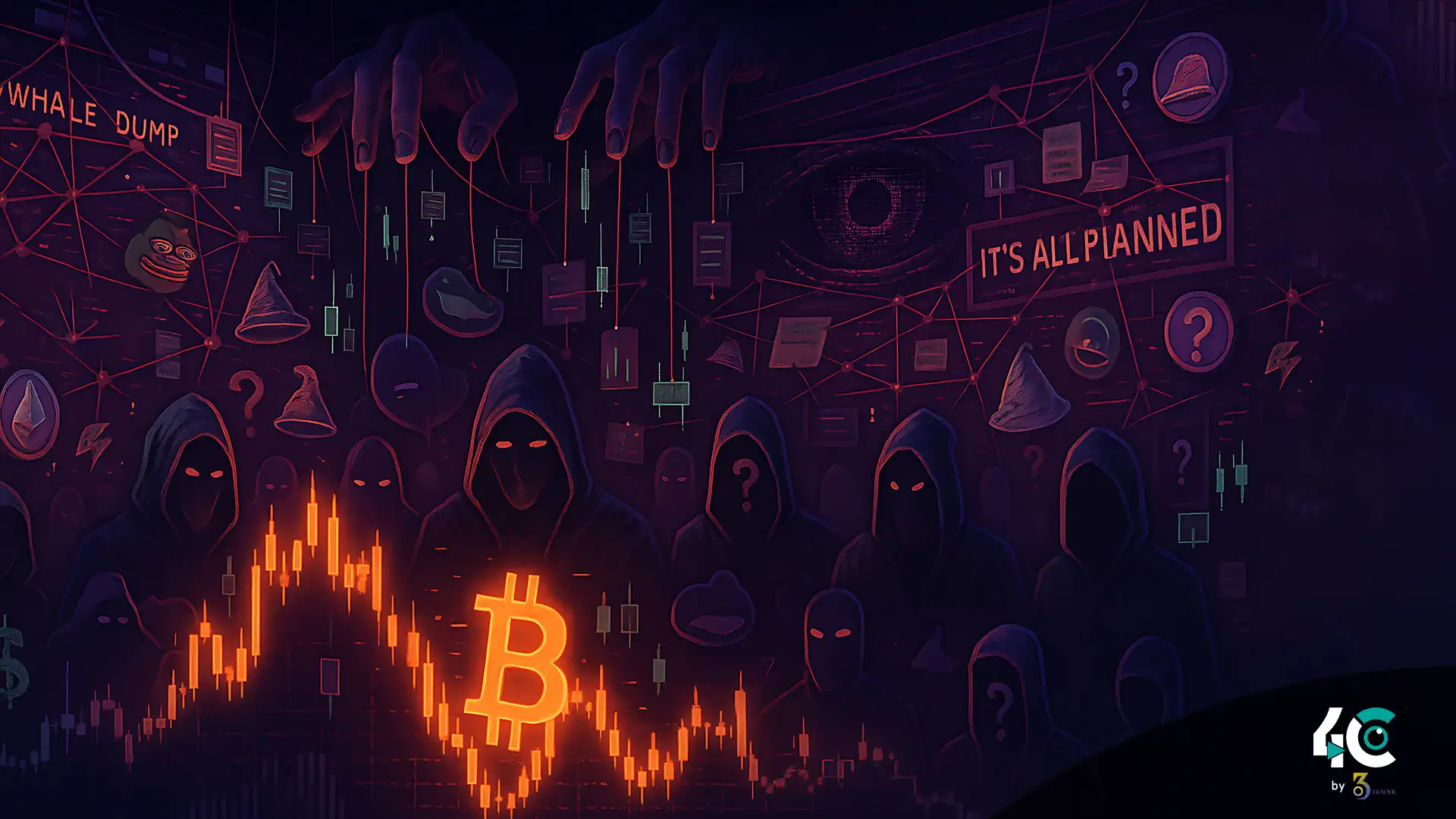The Anatomy of a Conspiracy Theory in Crypto
There is a possibility of speculating on the cryptocurrency market as it is very volatile, decentralized, and poorly regulated. When prices surge or crash, traders tend to find a scapegoat for the price changes. The market manipulation conspiracy theory claims that there are hidden forces behind market movements who have malicious intent. Common themes include:
- Shadow Whales: Coordinated groups of large holders (“whales”) who seem to manipulate prices by placing massive buy or sell orders.
- Centralized exchanges, including Binance or Coinbase, engage in wash trading, insider trading, or pump and dump schemes, the claims go.
- Some theories claim that government regulators, or even central banks, plot to crash the market to discredit crypto or maintain control.
- Belief that bots are used to bug small projects so that the larger guys can profit.
Theories tend to flourish because of the fact that they are easier to digest. Moreover, they are emotionally satisfying. Also, they can fill a gap where things are too uncertain.
Why Do Conspiracy Theories Flourish in Crypto?
There are various psychological and environmental causes that make crypto communities prone to conspiracy thinking.
Cryptocurrency markets are unregulated, unlike other financial markets whose operations are overseen. The lack of transparency in decentralized protocols, pseudonymous participants, and order books creates the right circumstances for speculation.
2. High-Stakes Environment
Investing in crypto is risky, as you can make and lose money overnight. People always seem to want an answer when they lose, and they often create one that has no basis.
3. Tribalism and Echo Chambers
Online spaces like Reddit, Twitter, and Telegram messages lead to worldview through groupthink. When a theory gains traction, it picks up speed quickly within closed circles.
Crypto enthusiasts typically prefer decentralization because they don’t believe in centralized institutions. Doubt exists about exchanges, regulators, and other traders. This extends to anything that appears unequal.
When something goes wrong in the trading, traders, because of their emotional earthquakes and FOMO (fear of missing out) and FUD (fear, uncertainty, doubt), become primed to seek a scapegoat.
A Study of the Shadow Whale
Countless conspiracy theories exist in today’s world, one of which is shadow whales. These are anonymous entities thought to create chaos in the market to benefit at the transaction’s expense. For example, the collapse of Terra (LUNA) in 2022 is noteworthy.
As UST lost its peg to the dollar and LUNA plunged, the speculation is that one whale dumped billions worth of tokens to trigger the event.
Social media users theorized that this so-called “rogue whale” either acted in revenge for Terraform Labs or is profiting from short positions.
As it turns out, further investigations found no evidence of coordinated sabotage. It appears selling was due to panic and algorithmic glitches.
The story of the shadow whale spread even without any evidence, showing how an unverified claim could easily catch on in the crypto world.
Impact of Conspiracy Theories on Market Behavior
One theory is that, given their numbers, not all parties are guilty.
When it is believed that it is part of some kind of scheme, the fear goes around quicker. So, people start a major sell-off, making the fall deeper.
Constant bombardment with conspiracies makes people lose faith in the exchanges, developers and others involved. So, long-term adoption efforts can be seriously hindered as a result.
3. Encouraging Irrational Decisions
Traders influenced by conspiracy theories might sell off their assets without a second thought, dumping everything at any sign of trouble.
4. Creating Divisive Narratives
The fracture within communities on ideological lines, some embracing conspiracies while others reject them, causes infighting and reduces collaboration.
The Psychology Behind Belief in Conspiracies
To grasp why people believe in conspiracy theories, we should consider their cognitive biases.
There’s a motivation behind attributing random things to people, to make them believe otherwise. It is nice to think that someone is in control, and not randomness.
Those who comprehend the information interpret it in a way that meets their needs so that they refuse to meet contrary evidence, treating it as part of the cover-up.
Predictability is what humans seek, especially in the uncertain environment of crypto. Complexities are simplified by conspiracy theories.
People believe similar conspiracies in order to bond and strengthen their community culturally and socially.
Mitigating the Spread of Conspiracy Theories
With the growing prevalence of conspiracy theories in crypto, that needs addressing.
For Platforms
Exchanges and projects must publish audits regularly, along with their activities and reports.
Moderators get to work flagging unfounded claims and helping verified information.
For Traders
Before making any judgments about the veracity of any article or video, make sure to think critically.
Always focus on the fundamentals: Do not make decisions based on gossip. Rely on technical analysis, don’t you? Use cases and macroeconomic trends.
For Developers
Communicate with communities effectively to debunk myths and reassure users during uncertain times.
To reduce reliance on speculation, educate users with resources about how the market works.
Final Thoughts: Fighting Phantoms in Modern Day
You cannot have crypto without conspiracy theories. It is inherent in the system because it works on decentralization and unpredictability. There are warning signals of events through which lessons must be learned to be proactive in system risk. By creating more transparency, encouraging critical thinking, and fostering dialogue, we can lessen the impact of these shadow fights in crypto.
In the end, the mind and the market will create shadows—which cast doubt on fact versus fiction and enable us to use crypto more.
Conclusion
Much of the huge and unexplainable movement of the market in the crypto sector leads to conspiracy theories. It could be involving shadow whales or manipulative exchanges or even government conspiracy. The general environment of high stakes and transparency involved in the crypto market gives rise to conspiracy theories. Although these stories tug at the heartstrings, they rarely withstand fact-checking and tend to drive panic, distrust and craziness. To stop them from spreading, it is necessary for platforms to be more transparent, traders to concentrate on fundamentals, and developers to work with communities in the open. Conspiracy theories may always be with us, but aiming to prevent them rather than punish them should help build a better crypto world.




